Every good retailer will use Scarcity messaging at one point. Here’s how you can use it too.
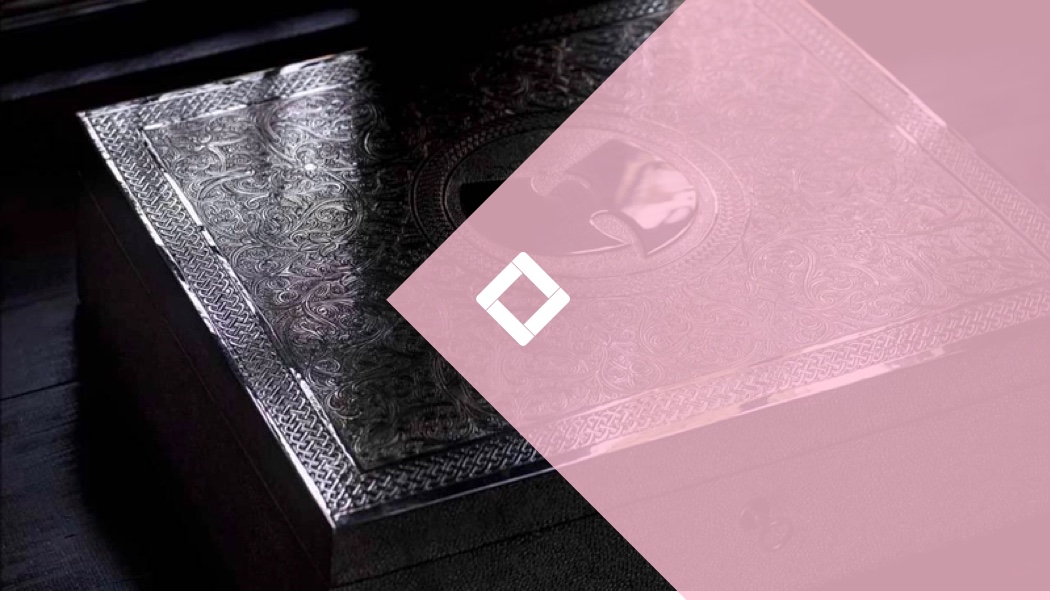
Every good retailer will use Scarcity messaging at one point. Here’s how you can use it too.
Back in 2015, a businessman by the name of Martin Shkreli bought a copy of a Wu-Tang Clan album for the exceptional price of 2 million dollars. Now you might ask yourself, why would someone buy a rap album for such a ridiculous price?
Well, first off, Wu-Tang Clan is a famous rap group from the United States who have sold gold and platinum albums since their genesis in 1991.
But what’s so special about this specific album?
The reason Martin Shkreli was willing spend a whopping 2 million dollars on this album was because the Wu-Tang Clan only released one copy of it. One. Just one physical copy. Having only one copy of the album makes it extremely rare and scarce and, therefore, very interesting for someone who has the means to buy it. Wu-Tang Clan has masterfully used a persuasive technique called the Scarcity heuristic.
The reason scarcity messages trigger us is that we perceive things as more desirable when there is a possibility we can’t acquire it. Haven’t you heard? You always want what you can’t have. This is part of the nuances of marketing psychology.
Why is it that we want the things we can’t have? Or, more specifically, the things that only a select amount of people have? We've already discussed the inner-workings of social proof, discovering cases of when it works and when it doesn't.
This week, I'm introducing another crowd favorite that acts simultaneously as social proof’s opposite and close cousin: Scarcity Marketing. Together, we’ll explore the many faces of the mighty scarcity principle, its strengths and weaknesses, and how you can use it most effectively in your marketing strategy. Let's jump straight in.
BE QUICK, WE’RE ALMOST OUT OF SEATS! THIS DEAL LASTS UNTIL THE END OF THE DAY! THIS IS A LIMITED EDITION SHOE!
These are some prime examples of scarcity-driven messages you’ve either seen or utilized.
Nothing new, right?
Well, each of these sentences differs slightly in the type of scarcity they leverage. When it comes down to it, there are four types of scarcity that can be used in different situations:
Exclusivity
The one at play depends on three different stakeholders: the Producer, Product, and Consumer.
Bear with me while I explain what we mean with help of some examples.
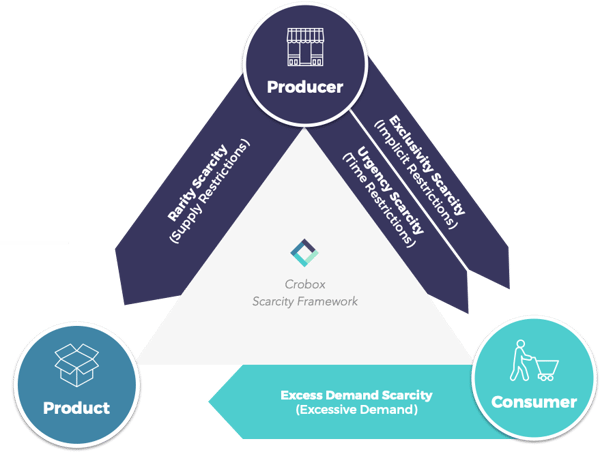
Some products have a price-tag that almost makes you gag when you see the number of digits.
A good example of this is whenever Apple launches a new iPhone. Is it just me or do they get more expensive with every model?
A lot of people dislike this about Apple. But they actually do this on purpose to make their products seem more exclusive since fewer people are able to afford the newest luxury item.
This implicit form of scarcity is called is Exclusivity Scarcity. It's implicit because the product itself isn’t exactly scarce, but acquiring it becomes harder with every price increase.
A lot of brands embody this type of scarcity and a lot of people identify with this feeling of exclusivity. Brands that capitalize on this behavioral princple make it harder for people to get the products they want, making their products more desirable.
Research shows that some people stop buying into products when others jump on board. As soon as a product becomes popular, people opt out.
Eliciting a feeling of scarcity due to exclusivity will be more efficient for those looking for status.

Once a brand has reached this desired exclusivity level, consumers want to equate themselves with others that already own their products. For them, it doesn’t matter that others may have that item. All that matters is that they achieve the same level of implied status by acquiring an exclusive product.
Exclusivity scarcity is also more effective on people that feel powerless. They want to reduce that feeling and, instead, be envied.
One way of doing so is buying high-status luxury goods, as these signal status and exclusivity. For example, wearing expensive brands could be a sign of someone compensating for their lack of power.
So how to recognize exclusivity scarcity?
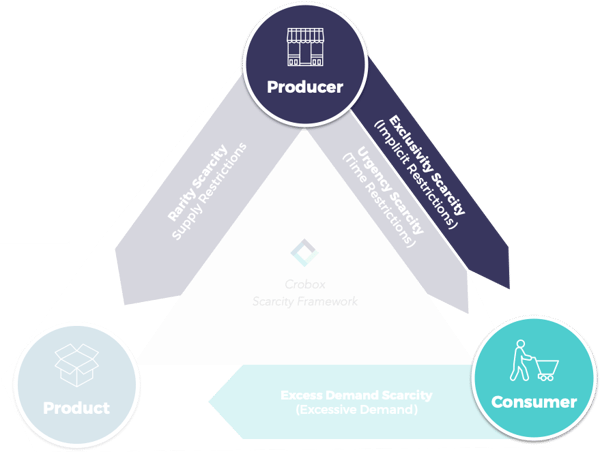
Referring back to the graph above, the Producer (Apple) is putting restrictions on the Consumers' ability to buy the products by increasing the price of these products, making it an exclusive product.
Restrictions can be price increases or needing to have a certain skill, for example, requiring they are a part of a group. These restrictions are not related to the product supply.
Which begs the question: How do you use this kind of scarcity in your marketing?
To use this type of scarcity, it’s interesting to play with the price of certain products or the ease to actually buy them by making sure it’s for members or recommended individuals.
Because it’s more implied than explicit, using copy like “exclusive” could actually make your product seem less exclusive.
Also, be sure to try and use this tactic on products or services people can tie to their identity, something people would use to increase their feeling of exclusivity and status.
Rarity Scarcity usually goes hand in hand with Exclusivity Scarcity, which can make it hard to distinguish between two.
Those looking for rare items are often also looking to acquire a higher status or distinguish themselves to fulfill their need for uniqueness.
One way they do this is by buying a product from the brand Supreme. This skate brand prides itself on the creative collaborations it has with other brands when making products and their own "unusual" products, ranging from a crowbar to nunchucks and bolt cutters.
The collaborative creations they’ve made are rare, because collaborations with a brand only happen on a single occasion and are done with brands that are usually very different from their own.
It seems as if Supreme has built their business model around making unique items by either collaborating with another brand or slapping their logo on something that is not a fashion item. For example:
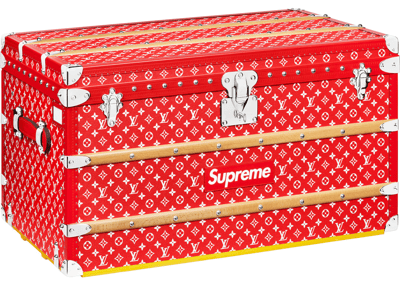
This item you see here is a collaboration piece between Louis Vuitton and Supreme. It’s a product both brands are not known for and won’t make again anytime soon, making this occasion very rare and unique since there is only one peoduct.

One of their weirdest items is probably just a brick with their logo on it. It may seem like they're trolling their audience, but people will acquire these rare items to show off their uniqueness and status.
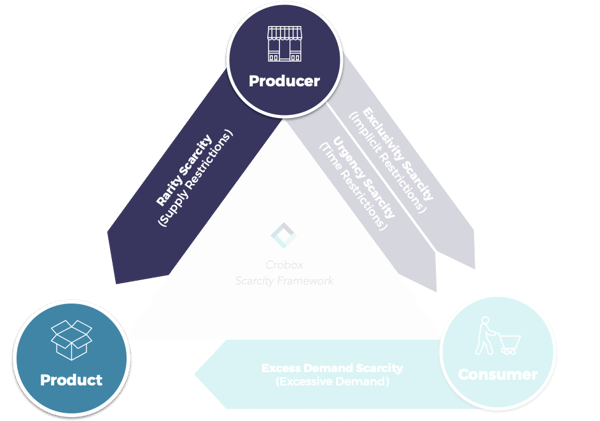
We call this rare rather than exclusive because a production limit is set at the beginning of the products' life cycle. Meaning, the producer has set restrictions on the product supply on purpose. The Wu-Tang Clan album is a prime example of this Rarity Scarcity.
Wu-Tang Clan put a restriction on the product supply from the start, making that edition extremely rare. Buying a rare product has similar effects on individuals as exclusive products. People purchase products in an attempt to increase social status, reduce the feeling of powerlessness, and generate envy.
Besides trying to find ways to make one’s peers jealous or envious, people also want to feel unique, which is not necessarily related to a high status.
Individuals with a need for uniqueness regard material possessions as an extension of their identity and use products as vehicles to express their identity.
Using copy like “limited edition” or “rare” can boost the interest in products that can be linked to someone’s identity.
For example, people who care about fashion or sneakers and attach their identity to these items are susceptible to these keywords.
This also goes for other luxury products and can even be used on experiences. Individuals like to boast about the things they do and have but it depends on where they feel their identity lies.
So far, we’ve covered rarity scarcity (limited supply established at the beginning production) and exclusivity scarcity (limited number of people are able to acquire item). Both of these help individuals to express status or fill the need to be unique.
But not all brands are looking to enhance the perceived status of their customers. And yet that doesn’t mean that they can’t use scarcity effectively.
On the other side of the scarcity spectrum, we find ways to express scarcity that have nothing to do with exclusivity and can even backfire if you use it on status and identity-related products.
This time, it’s scarcity in time a.k.a. Urgency Scarcity.
So when and where would you find this fine piece of persuasion that everyone loves to hate? I’m glad you asked.
These two words make people shiver with either excitement or disgust.
It’s that one day of the year where retailers let go of their products for a fraction of the initial retail price.
Along with the number of discounts that can be found during Black Friday, the temporary nature of these deals makes people act fast.
Adding a deadline to a deal or the availability of a product or service increases urgency
With these restrictions in place, the deal itself becomes scarce. The motivating effect is more than the money you can save - it’s being able to take advantage of a deadline tied deal that creates a sense of being “smart shoppers” among buyers.
Buying a product with a discount feels like “winning” a bargain, meaning that it provides both utilitarian (functional) as well as hedonic (fun) fulfillment. A psychologist has described this joy-of-winning as a,
“pride-like satisfaction of having won in an implied game against other customers"
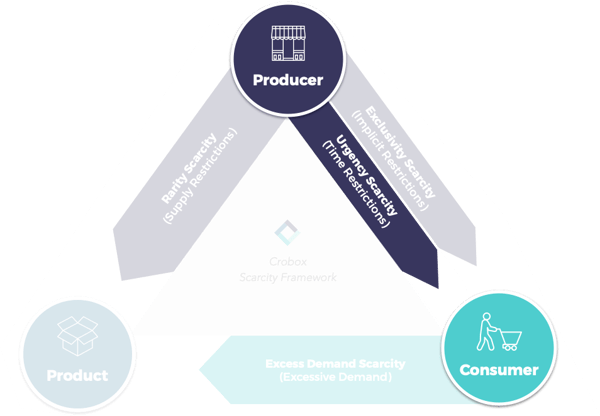
A retailer participating in Black Friday sales promotions finds himself using multiple persuasion techniques, especially time restriction.
Again, going back to the graph, it is a time restriction that is put on the Consumer by the Producer, which makes this a case of Urgency Scarcity.
Giving customers the impression that they’re smart shoppers and winning a competition against other shoppers will strengthen any urgency appeal. Saying things like “This deal is only available today” or “Temporary deal” will trigger urgency within customers.
Often products are scarce simply because the demand exceeds the supply. No tricks, no limited editions, no exclusivity, or other barriers that make the product scarce. Sometimes it’s plain old supply and demand.
So how does one make use of this situation?
Especially when products are almost sold out due to high demand, scarcity can be skillfully used to drive purchase behavior. This form of scarcity that many of us will be familiar with instills fear in shoppers by telling them they may miss out on the hot item.
One of the reasons that could explain why people feel the need to buy something that is almost sold out is because of the scarce-is-good-heuristic.
Famous psychologist Cialdini (1993) assumes that people learn based on their previous buying experiences. So, products that are scarce must be of better quality than non-scarce ones.
Similar to social proof, where people look at other’s behavior to decide what to do, excess demand scarcity has the rationale that if many people buy an item, it’s probably the right thing to do. And, you better hurry in doing it before your chance is gone.
In this case, consumers tend to neglect their own product knowledge and follow the (buying) behavior of other consumers. Excess demand implies popularity and, at the same time, shows there isn’t much left of this popular item, so you better act.
As a result, people may be motivated to buy the popular item. This idea can be summarized in the following thought:
“If everyone is trying it, it must be good.”
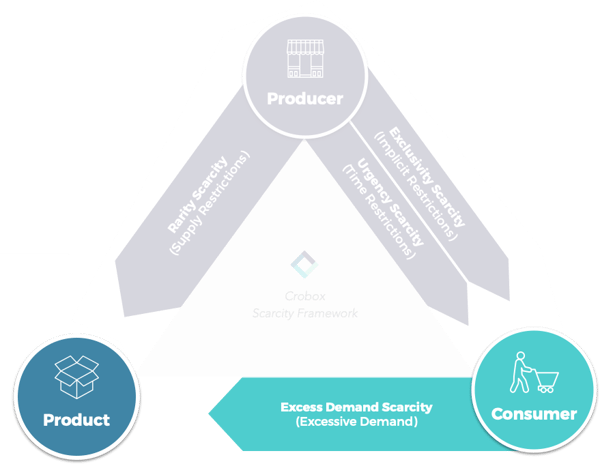
Looking at the graph, you can see that the consumers are putting a strain on the product supply by the excessive demand. Which, logically, makes this form of scarcity, excess demand scarcity
When promoting products people don’t know much about or are unsure of the quality, showing that the sales of that product are booming can help reduce these concerns. Using copy like “almost sold out” or “sales are going fast, don’t wait too long” should help enforce this concept.
A straightforward and perhaps obvious reason scarcity wouldn’t work is that the majority of consumers have encountered these types of messages before.
Moreover, many scarcity messages have been called out as fake, which eventually leads to people being desensitized to them. In fact, dishonest scaricty messages are part in parcel of Dark Patterns, and should never be used on a website.
When shoppers get wind or tricky or manipulative persuasion techniques, they resist the message that’s used to persuade them. So if there's a reason to believe the scarcity message is untrue or exaggerated, your efforts will likely backfire.
Individuals seem to ignore signals such as “Limited Edition” on products that don’t promote one’s self-expression. Think of limited edition toothbrushes or exclusive pillows...maybe in the wake of COVID-19 some really rare toilet paper is more your thing?
What about tissues?
These goods aren't related to one’s identity, so people care less about the fact it’s a limited edition. This product characteristic doesn't add to the functionality, which doesn’t increase its enticing nature.
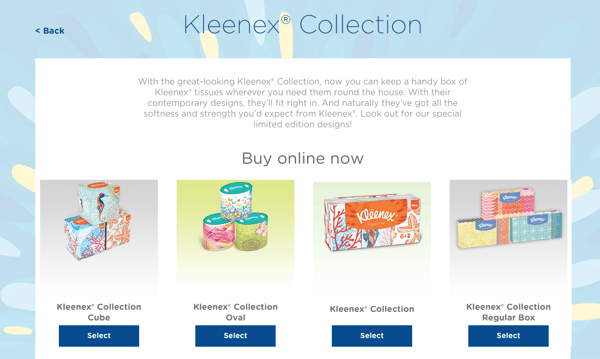
More often than not, scarcity messaging will work on products being sold for their benefits, not their attributes. Read this post for more on attributes and benefits to get a better idea of what I mean.
Better designed boxes are nice, but calling them limited edition won’t do much for tissues.
Contrary to social proof, scarcity appeals are not as effective when promoting products that are usually bought as gifts. Buying something unique has a risk attached to it that the one receiving the gift might not like it as much.
However, this is not set in stone. It obviously depends on the relationship you have with the person for whom you’re buying the gift.
Are you buying a gift for someone you don’t know that well, maybe a colleague? Then you’re probably more inclined to buy something that is very popular and that most people like.
Or are you buying a gift for your significant other that you’re trying to impress? Then you probably look beyond the well known and popular items and go for something special, something… unique.
Do the gift giver and the gift receiver have knowledge on the product or would either of them be lost as soon as they set foot in the store? If neither of them has knowledge in the product category, then a scarcity appeal wouldn’t be much of help.
It doesn’t matter if the product is exclusive, rare, or only available for a limited amount of time because these messages won’t teach someone about the product.
Scarcity comes in different shapes and forms. There are four overarching types that you can distinguish: Excess demand, Exclusivity, Urgency, and Rarity.
These are very effective tactics for persuasive marketing. But they aren’t silver bullets. Depending on your shopper's individual context, you need to figure out what type of message you want to show.
What remains true in our observations of human behavior is this:
We often want the things we can’t have.
But just like social proof, scarcity isn’t a flawless one-size-fits-all solution. Understanding your audience is key.
Coming out of this article, keep the following in mind:
There are four types of Scarcity
Exclusivity
Rarity
Urgency
Excess Demand
Three variables determine what type you’re dealing with
The Producer can put restrictions on either the consumer or product
The Consumer’s demand effects Product/Supply
The Product
Reasons why Scarcity wouldn’t work
Customer is desensitized
Using scarcity on products that are meant as gifts
Using scarcity on items that are neither self-expressive nor related to identity